My religious beliefs lie somewhere between “atheism” and “the transcendentalists were on the right track.” Why, then, a reasonable person might ask, had I been keen for years to visit an Italian city that, in the words of UNESCO, boasts “a unique collection of early Christian mosaics and monuments?”
Because I freaking love mosaics. Not so much the large, Gaudian-type, although I do respect those. I drool over tesselated stone, glass, and tile in vibrant marine hues; in earthy, berry, foresty colors; in gold and royal blue. I want to see legions of shards transfigured into sinuous shapes or improbably expressive faces.
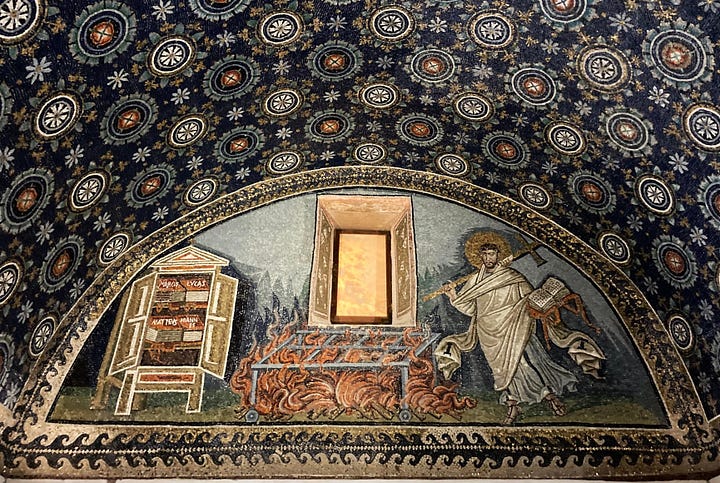
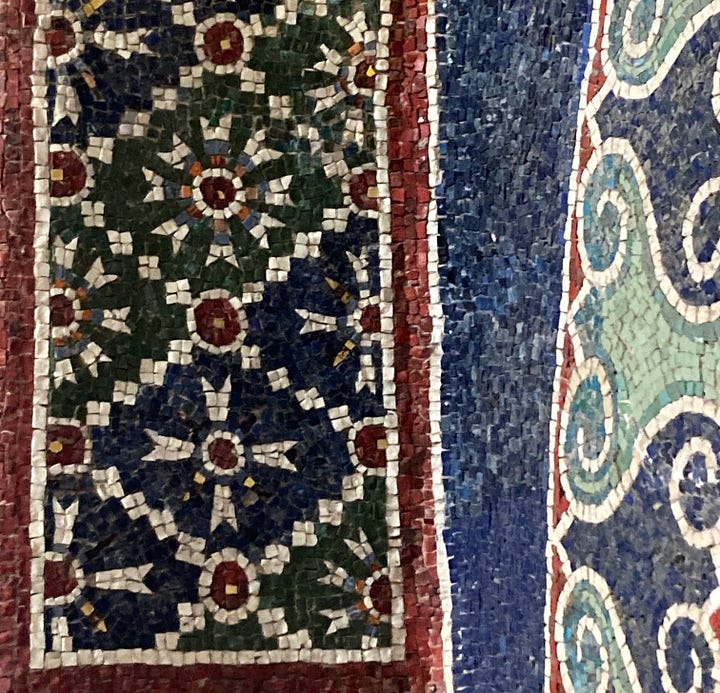
And I don’t want to see them penned in behind museum glass: I want to experience them in the wild.
As for the subject matter? Irrelevant. I just want to be dazzled by the beauty and wonder of free-range, Byzantine-era mosaics.
So, when my daughter Lucia popped across the pond from Boston to study abroad in Florence this semester, obviously I had to visit her (duh!), and obviously I chose to forego the more usual daytrips from Florence—Siena, Lucca—in favor of a 2.5-hour, multiple-connection train outing to Ravenna.
On the Friday that we planned to go, Italian railway workers were on strike. HA! If you’ve read my previous two posts, you know what I think of the Italian railway system and its employees (spoiler alert: my feelings on this topic are neither holly nor jolly).
Mind you, Italian railway workers don’t go on strike in a normal way. They only walk off the job on some routes, at random times, perhaps based on what their horoscopes or fortune tellers advise. Hapless travelers are left playing Hercule Poirot trying to solve the mystery of which destinations are affected by service disruptions.
Which is what Lucia and I were doing over caffeinated beverages that Friday morning at the cafe next to her apartment.
“Cinque Terre?” I suggested, then immediately answered myself, “No. Not in the mood to hike today.”
“Lucca?” Lucia asked.
“Eh, you’ve been there a couple times already this fall.”
We considered Bologna, some random hill towns, even Rome, all of which were discarded for various reasons.
“I want to go to Ravenna, strike be damned!” I announced, tossing back the last of my caffè americano. “And if we don’t make it to Ravenna, well, we’ll have an adventure.”
Lucia kindly refrained from pointing out that I’d already had one adventure that morning—my Airbnb flooded and I fled with my suitcase in tow—and that perhaps we’d be better off seeking new Florentine accommodations for me and my luggage, then defaulting to a predictable, in-town activity like a Medici Palace tour.
Instead, we shoved changes of clothes into Lucia’s backpack in case we ended up staying somewhere overnight, she hauled my wheelie up the endless flight of stairs to her apartment while I enjoyed a second caffè americano, and then we made tracks for the Stazione di Santa Maria Novella.
And, lo! upon our arrival, we were greeted with the welcome news that the previously strike-impacted Ravenna train was now un-impacted. We purchased our tickets—before getting on the train, of course—and eastward we went.
Many years ago, I read a Rick Steves article to the effect that the only reason for going to Ravenna is to see the mosaics. While Lucia and I were hopeful that there was, in fact, more to the city, our ten-minute walk from the Ravenna station to the B&B we’d reserved was rather unpromising.
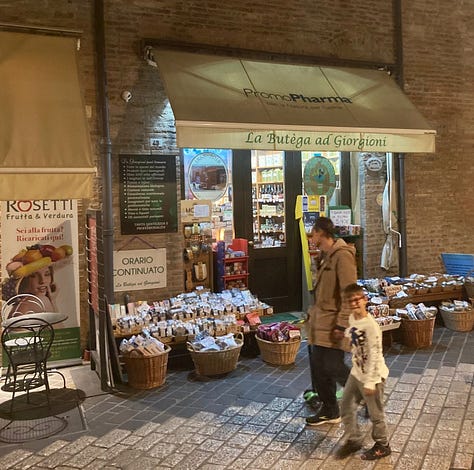
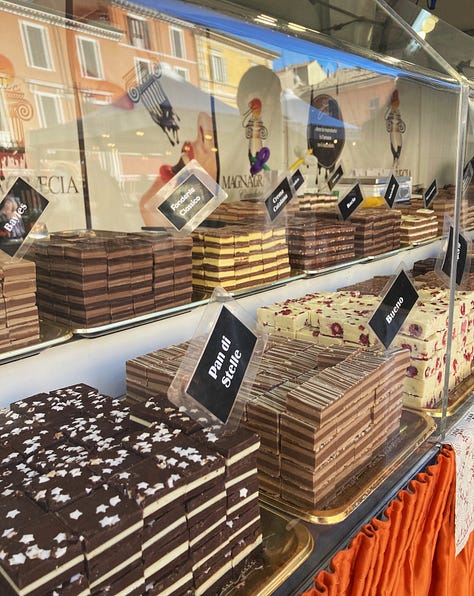
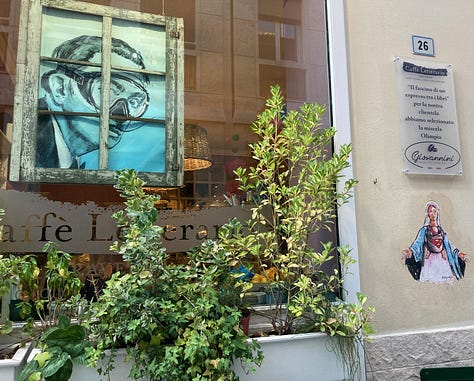
But, as we discovered after checking into the welcoming A Casa di Paola and stepping out in search of dinner, Ravenna is a city filled with non-mosaiced delights. Lucia and I happily strolled a blocks-long, pedestrian and bike-friendly main street that winds its way through an array of shops, restaurants, and studios before we settled into prime outdoor seating and enjoyed two hours of drinks, dinner, and people-watching.
“What the heck is Rick Steves talking about, that there’s nothing to Ravenna other than the mosaics?” I wondered aloud the next morning when we wandered into a chocolate festival at the Piazza del Popolo.


As for the mosaics themselves: I will spare you all of my “oohing” and “aahing” and descriptions of my various states of transcendence. Suffice it to say I was in non-denominational heaven, and that each mosaiced edifice Lucia and I visited that day was magnificent and utterly soul-satisfying.
The last place we visited was the Basilica di San Vitale, a 1,400-year-old church that provided the inspiration for Hagia Sophia, which was built a decade later in Constantinople (now Istanbul). I’ve visited both, and I’ve gotta say that I was more wowed by Ravenna’s contestant in the Miss Byzantine Church pageant.
“I guess we should go,” I said as we sat and gaped after we’d walked and gaped for 1/2 hour or so. “But I really don’t want to leave yet.”
“Me neither,” Lucia said. So we didn’t.
When our impending train departure finally forced us to move, I announced, “I think Dad and I will move to Ravenna.”
Since I have a history of saying that I want to move every place I visit and love, Lucia responded with a “mmhmm” or “nice” or something along those lines.
“Dad can do computer stuff. I’ll get a job as a ticket taker at the UNESCO mosaic sights and switch locations every day.”
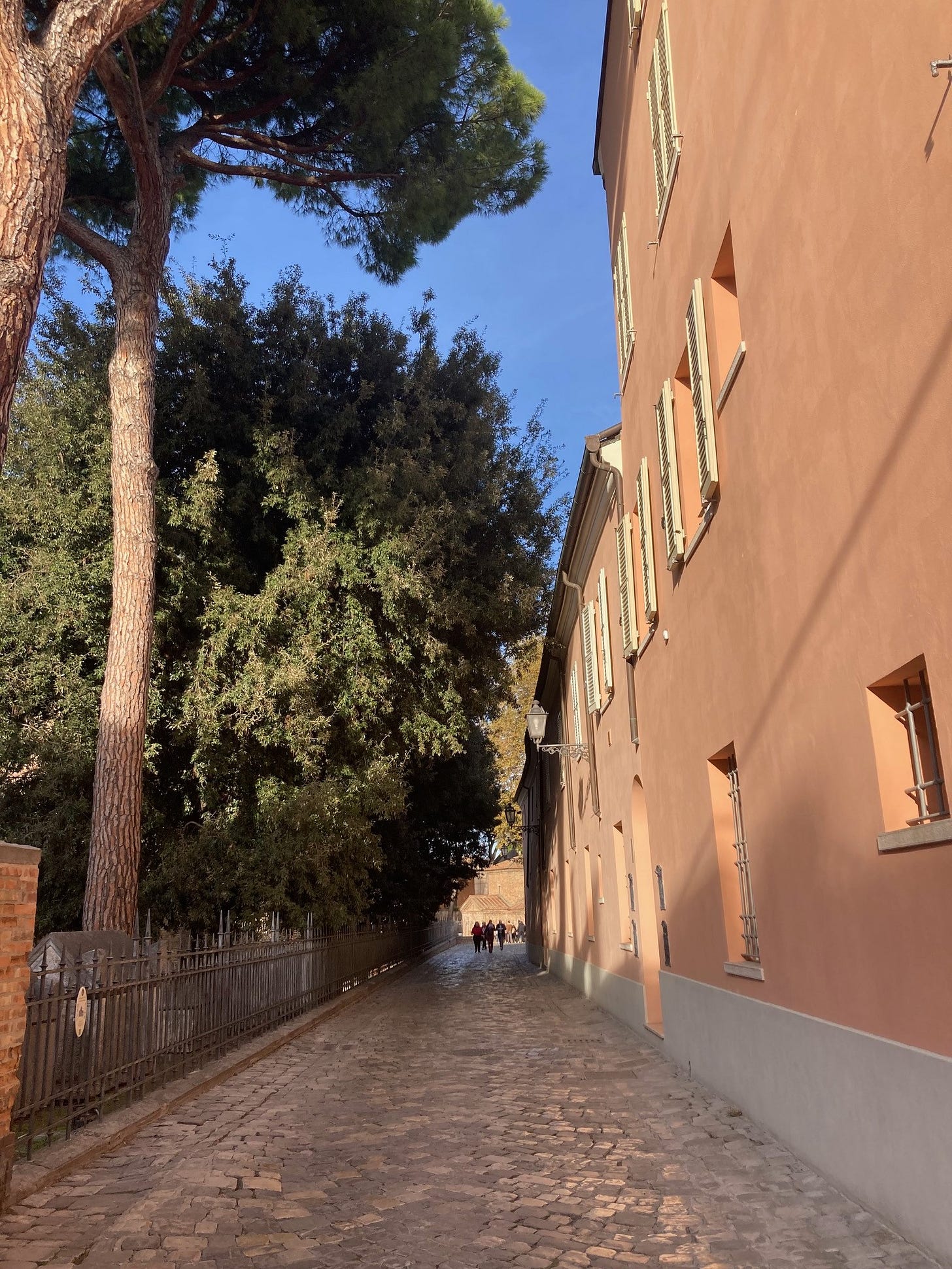
During our marvelous Ravenna adventure, I realized a few of the reasons that I love mosaics so much:
The spectacular colors remain vivid and vibrant more a thousand years after the mosaics were created because, unlike paint, stone, glass, and tile don’t fade.
They move. Or seem to. Mosaics feel more alive to me than other forms of art, with the possible exception of Remedios Varo’s paintings.
Mosaics provide a visceral connection with history. You can walk on some of them, you can touch the reachable ones without alarm bells going off, you can easily imagine the unknown but staggeringly talented craftspeople who made them selecting just the right shards and securing them carefully in place.
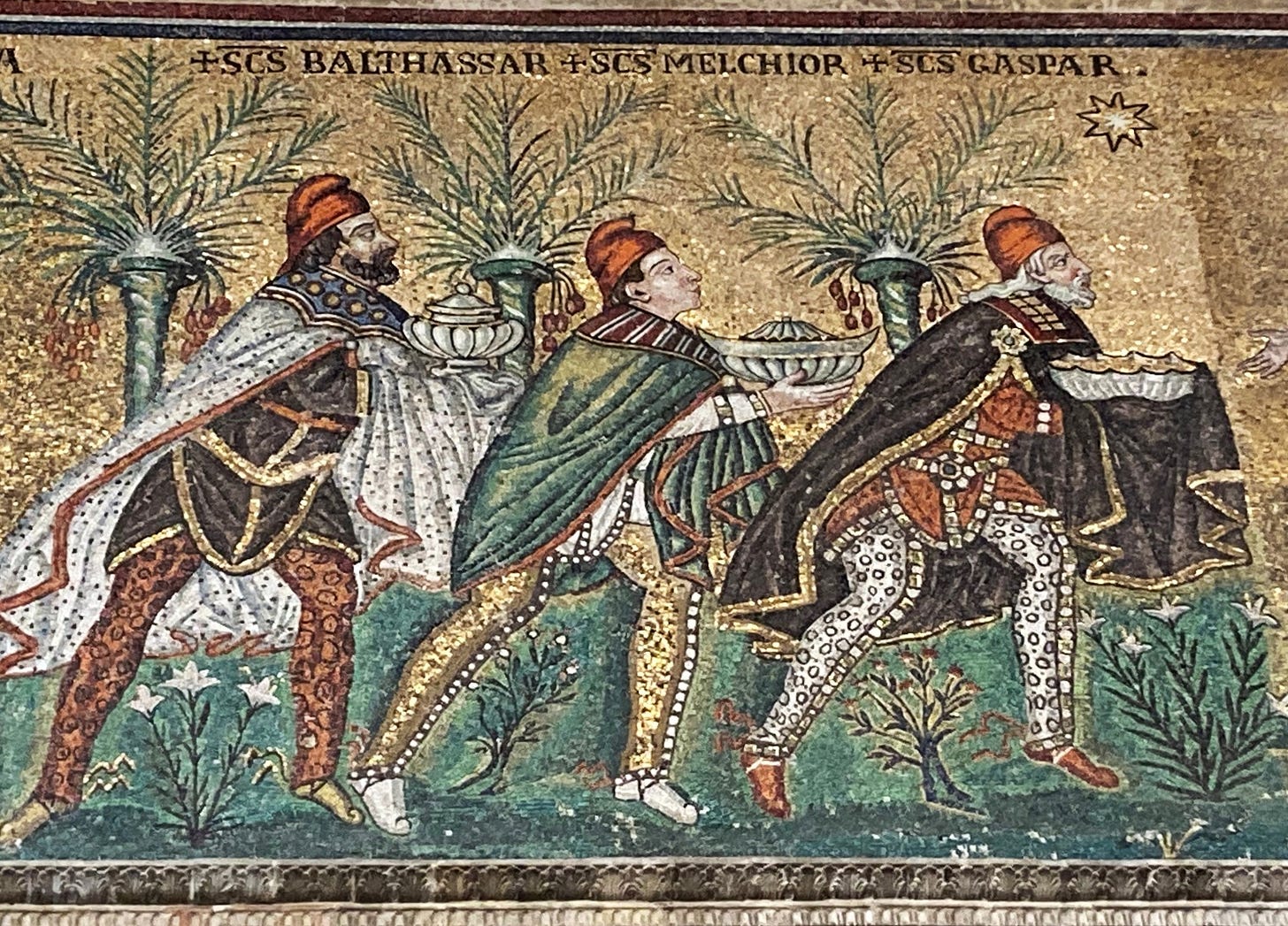
Oh, and in Rick Steves’ defense: he has updated his Ravenna article, which is a bit more enthusiastic about both mosaiced and non-mosaiced Ravenna.
Buon natale e buon anno a tutti!




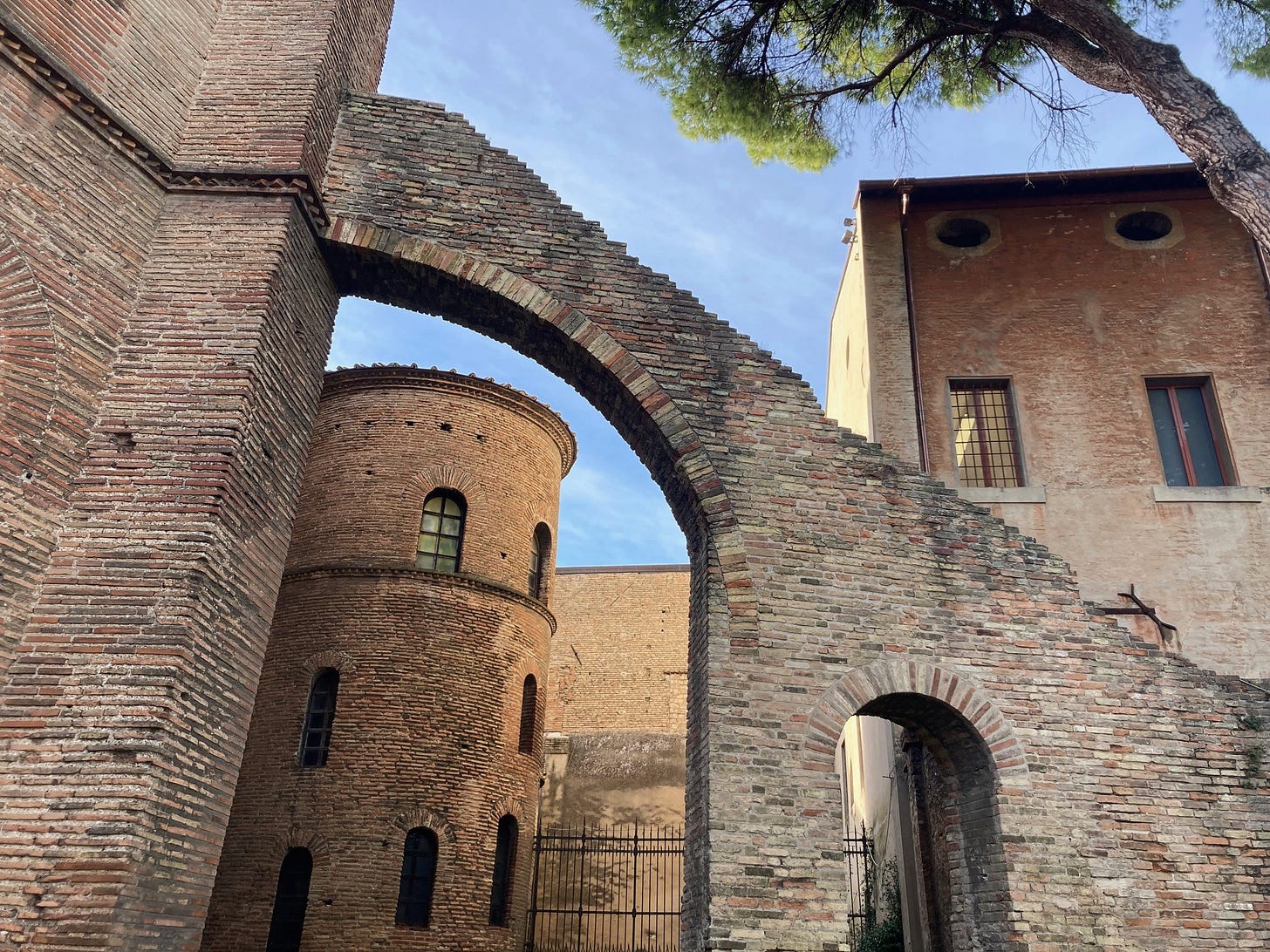
Have not been but might make the lost now! I too love mosaics for the same reasons.
You make a good case for mosaics. I'll be more appreciative than just thinking of them as fancy floors.